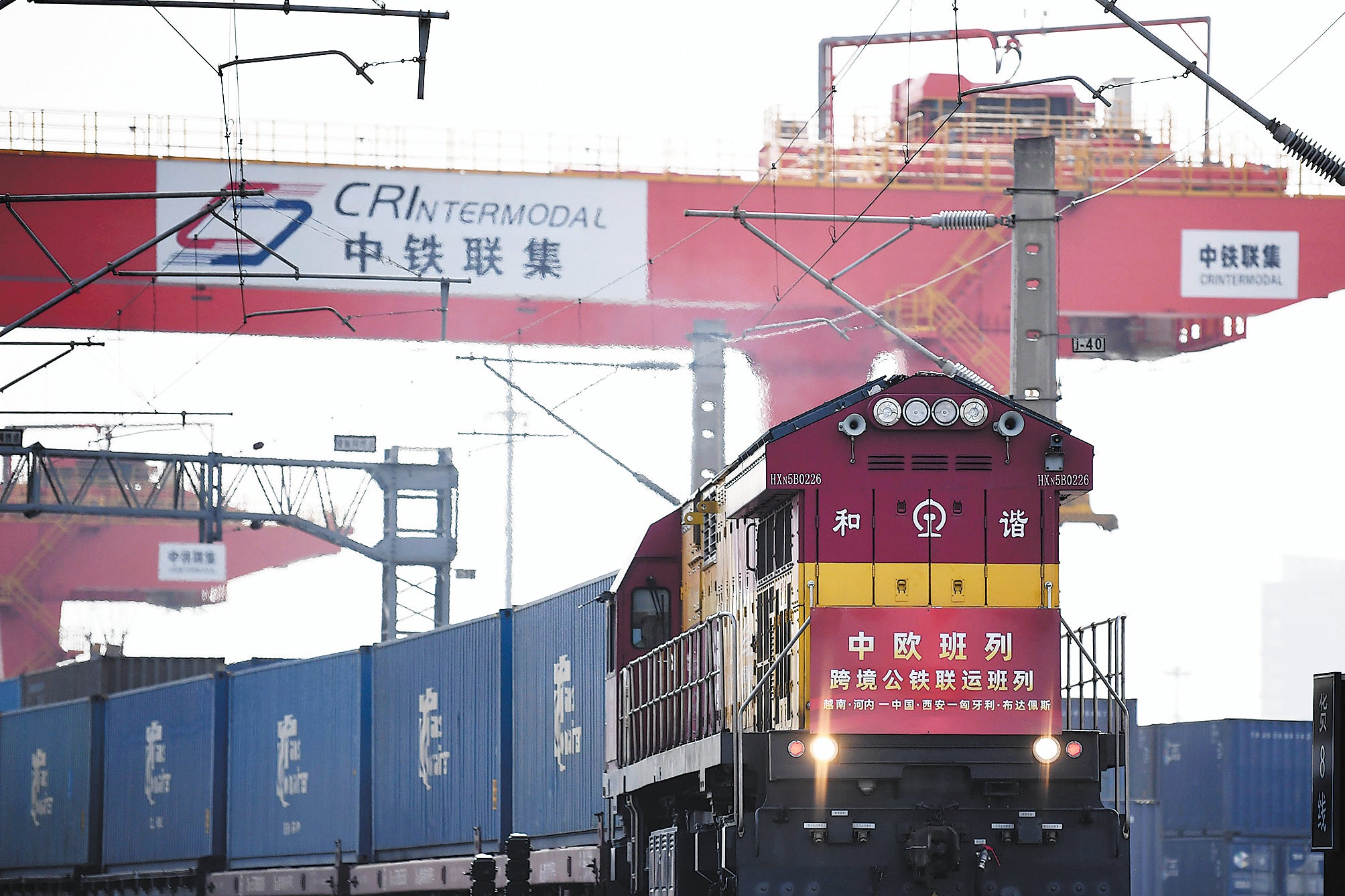China-Europe freight rail service traverses continents and history
THE ARTICLES ON THESE PAGES ARE PRODUCED BY CHINA DAILY, WHICH TAKES SOLE RESPONSIBILITY FOR THE CONTENTS

The China-Europe freight rail service which recently completed its 90,000th journey has facilitated cargo transportation and enriched trade and communication channels between China and European countries.
Since it began in 2011, the service has transported more than 8.7 million containers carrying goods valued in excess of $380 billion (£297 billion), the China State Railway Group, the operator of the service, said.
The China-Europe freight train, often referred to as a “steel camel caravan”, has made these remarkable achievements in just 13 years.
The first camel caravan to travel from China to Europe — and reportedly led by the Chinese imperial envoy Zhang Qian — took 13 years to make that singular, historic trip.
Over 2,000 years ago, Zhang Qian departed on his expedition from Chang’an, now Xi’an in Northwest China’s Shaanxi province. He traveled thousands of miles westward, traversing what is today the Xinjiang Uygur autonomous region and various nations in Central Asia. That expedition laid the foundation for the Silk Road, heralding the dawn of links between the East and West.
Numerous merchants, travellers, and their camel caravans subsequently followed in his footsteps, facilitating trade and cultural exchanges between China and Europe and playing a pivotal role in advancing human civilisation.
Inspired by Zhang Qian’s historic journey and the monumental success of the Silk Road, China proposed the Belt and Road Initiative in 2013 — a modern iteration of the Silk Road aimed at fostering enhanced communication between the East and West.
One of the prominent achievements underscoring the success of this initiative has been the China-Europe freight train service.
The exponential growth of the service, from a few dozen trips at first to over 17,000 a year, highlights the increasing market demand for this cost-effective and reliable mode of transportation when compared with air and sea routes.
This growth has been particularly pronounced since 2016.
From 2016 to last year, the annual number of China-Europe freight train services surged from 1,702 to over 17,000, a tenfold increase with an average annual growth rate of 39.5 per cent.
The annual value of goods transported by the service soared from $8 billion (£6.3 billion) in 2016 to $56.7 billion (£44.3 billion) last year.
The network of the China-Europe freight train service reaches 223 cities in 25 European countries, and connects more than 100 cities in Asia.

Shao Boer, the general manager of Xi’an International Inland Port Multimodal Transportation, a logistics company based in Xi’an, said his company was heavily reliant on the China-Europe freight train service.
He singled out the introduction of a set-scheduled service in October 2022 for special praise. “The set-scheduled service, in my opinion, is a milestone development in the China-Europe railway service, as it signifies a transition from gradual quantitative evolution to a qualitative change.”
Unlike traditional freight carriers, the set-scheduled trains strictly adhere to a fixed timetable throughout the entire route, resulting in reduced transportation times and enhanced service predictability.
The entire journey timetable is like a “freight high-speed train”, he said, arriving at each city and station in each country at the scheduled times. “This is why it runs very fast,” he said.
The set-scheduled service has significantly improved transit times, with a journey from Xi’an to Duisburg, Germany, now taking only 12 days.
Five scheduled services have already been initiated from Xi’an to Duisburg, and Chengdu, Sichuan province, to Lodz, Poland, reducing travel times by 30 per cent compared with regular China-Europe freight train services.
Cooperation with the Customs Department to expedite customs clearance procedures has also made the service faster.
“To improve efficiency for customs clearance, we have set up a 24-hour duty post at the station to facilitate immediate inspections upon a train’s arrival, expediting the release process,” said Zhao Yuanfeng from Horgos Customs in Xinjiang.
“It means that no matter when the China-Europe train arrives at the border train station, it can be inspected immediately and released as soon as possible.”
